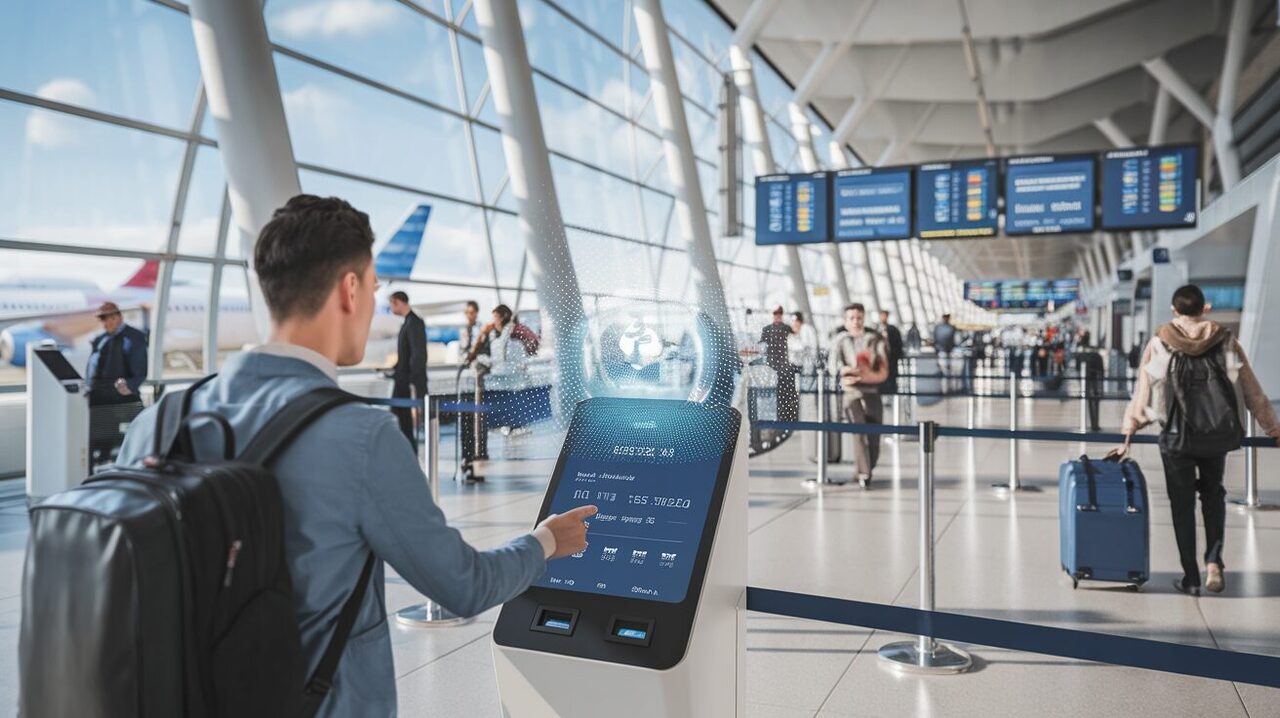The world of travel is on the brink of a remarkable transformation with the introduction of a single ID system utilizing digital travel credentials. This innovative shift aims to streamline airport processes, significantly enhancing the passenger experience by simplifying identity verification and boarding procedures. As the International Civil Aviation Organization (ICAO) spearheads this revolution, the potential for seamless travel becomes increasingly tangible, promising to reduce wait times, minimize paperwork, and usher in an era of efficient air travel. The integration of biometric technologies and mobile solutions stands to redefine the journey from check-in to takeoff, setting a new standard for the future of travel.
The aviation industry is on the brink of a transformative shift, poised to revolutionize the way travelers experience airport processes. Central to this change is the concept of a single ID facilitated by digital travel credentials, aiming to streamline various procedures from check-in to boarding. This initiative proposes not only to enhance travel efficiency but also to contribute to a greener, more sustainable future in travel.
Understanding Digital Travel Credentials
Digital travel credentials (DTC) are the cornerstone of this new approach to air travel. By allowing passengers to securely store their verified passport information on their smartphones, the International Civil Aviation Organization (ICAO) has set forth an initiative to eliminate the need for traditional boarding passes. This transition aims to simplify check-in procedures and enhance security measures at various checkpoints.
Facial Recognition Technology in Airports
The implementation of facial recognition technology is expected to play a pivotal role in making the travel experience more efficient. By utilizing advanced digital identity verification methods, airports can perform seamless identity checks at entry points, baggage drop-off areas, and boarding gates. This advancement not only promises quicker processing times but also reduces the need for physical documentation.
The Role of Airlines and Stakeholders
Several major airlines, including British Airways, Air France-KLM, Finnair, and Saudia, are actively exploring the implementation of DTC technology. The International Air Transport Association (IATA) has also introduced a concept called One ID, which enables a contactless journey from the moment passengers decide to travel until they reach their destination. This operational version of DTC emphasizes the need for collaboration among airlines and airports to ensure a unified transition to digital travel.
Advantages of Digital Travel Credentials
The potential benefits of adopting DTCs are multifaceted. Firstly, border crossings may become significantly faster and less restrictive, as travelers would provide their information ahead of time, allowing automated controls to expedite the process. The elimination of paper documents like boarding passes could contribute to a smoother travel experience, while minimizing environmental impact.
Challenges of Digital Integration
Despite the promising outlook, the transition to digital travel credentials comes with its own set of challenges. A considerable investment in airport infrastructure will be required to implement facial recognition systems and mobile device reading technologies. Furthermore, ensuring interoperability between various airports and airlines remains a significant obstacle that must be addressed for effective global adoption.
Concerns over Data Protection and Accessibility
The debate surrounding data protection is central to the discussions on digital travel credentials. While the ICAO and participating companies assert that personal data will be deleted after each use, there are ongoing concerns regarding the security of sensitive information. Additionally, accessibility issues persist for travelers who may not own smartphones or possess biometric identification documentation.
The European Union’s Digital Travel Application
In response to the digital transformation trend, the European Union is developing its own solution: the EU Digital Travel Application. This initiative aims to facilitate travel to and from the Schengen Area by allowing users to create and manage digital travel documents on their mobile devices. Scheduled for launch by 2030, this application intends to enhance border control efficiency, contributing to the overall security of the region.
Future Prospects in Digital Travel
The future of travel is undoubtedly leaning towards increased digitization. With predictions indicating that approximately 1.27 billion people will utilize digital travel identities by 2029, the travel industry must adapt to this evolving landscape. By anticipating these changes and positioning themselves as facilitators of new technologies, travel service providers can enhance customer experiences while embracing the digitalization of travel processes.
- Single Digital ID: A unified identity for travelers.
- Streamlined Checkpoints: Faster passage through security.
- Facial Recognition: Automated identity verification.
- Seamless Boarding: Elimination of physical boarding passes.
- Real-time Updates: Instant notifications on travel status.
- Improved Efficiency: Reduced waiting times at airports.
- Enhanced Security: Protection of personal data.
- Global Interoperability: Compatibility across international airlines.
- Eco-Friendly Travel: Reduced paper waste from boarding passes.
- Future Ready: Anticipation of digital travel trends.
Single ID for Seamless Travel
The recent introduction of Digital Travel Credentials (DTC) by the International Civil Aviation Organization (ICAO) marks a significant shift in air travel by proposing the elimination of traditional boarding passes. This initiative aims to simplify travel procedures through the storage of verified passport data on smartphones, using facial recognition and digital identity verification to expedite security checkpoints.
Alongside this, the International Air Transport Association (IATA) has introduced the One ID concept, facilitating a contactless journey from booking to arrival. Passengers will automatically receive updates on their journey pass, and identity checks will be conducted at various airport locations without the need for physical check-ins. These advancements promise to reduce processing times and improve overall travel efficiency.
However, the transition to digital travel comes with challenges, including the need for substantial investments in airport infrastructure and concerns about data protection and accessibility for all travelers. As digital travel evolves, new opportunities arise for enhancing passenger experiences through expedited border crossings and reduced reliance on paper documentation.

Hello! I’m Elisa, a 45-year-old travel companion with a passion for exploring new places and cultures. With years of travel experience under my belt, I thrive on creating memorable journeys for my clients. Let’s embark on an adventure together!





